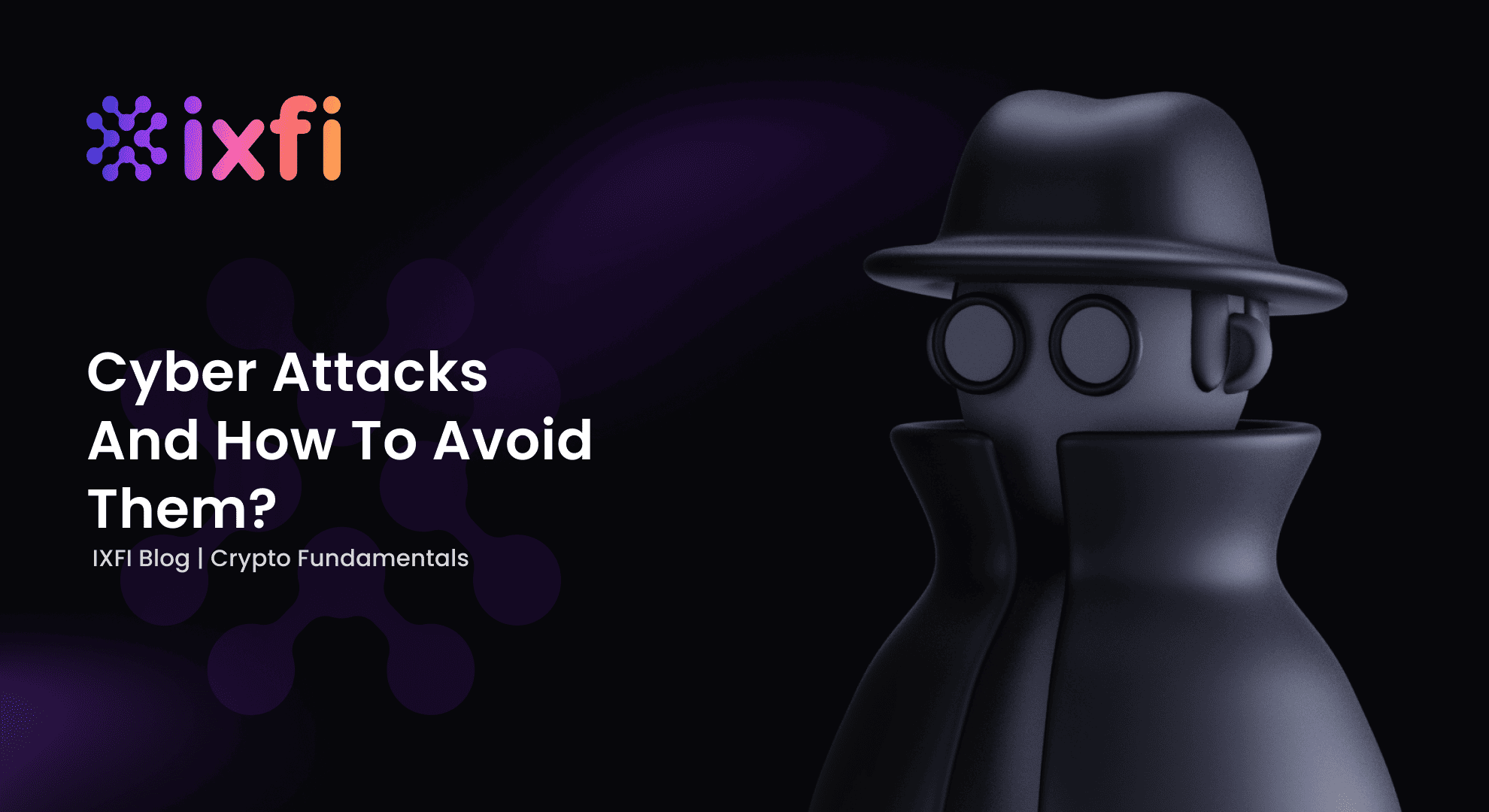We often hear about hackers and cyber-attacks. These days, cyber security problems have become common, and the cryptocurrency market is one of the favorite go-to places for hackers. Data theft attempts and attacks target corporations, governments, and NGOs, and the risk of being targeted by hackers increases. With the growth of the cryptocurrency market, scams have been growing, and highlighted security gaps from some projects represent a target. But why do these attacks happen, and how can we avoid them?
What exactly are cyber-attacks?

Cyber-attacks are digital crimes committed through computer systems against the system(s) of other persons, banks, companies, and private or state organizations. Criminals gain forced access to the data of those systems to steal money, and data, disable computers or use them for their purposes, to make the situation worse, or to prepare them for other attacks. They can also be used nowadays as a weapon of war, significantly increasing the strikes against a country in the event of a conflict. The results can be devastating for anyone dealing with hackers, the financial losses are colossal, and any organization’s reputation drops dramatically if it cannot provide data security.
How do attackers target cryptocurrencies?
A cryptocurrency market is a place with a lot of growth potential, there is a lot of attractive money in the market for attackers, and the fact that it is not a regulated market gives the impression that even if the attackers are caught, nothing can happen to them. It is also the main reason for the discussion about cryptocurrency privacy and how far we can go to keep the safety of finances intact.
These are the most common when it comes to private wallets and transfers. Still, in addition to technical cyber-attacks, there are also fake accounts on Instagram, Twitter, or Facebook, where people that use fake names or influencers tag those who follow the accounts in the comment section or ask in private for amounts of money, with the promise of a very high return. These scammers are also using Telegram and Discord groups and links that impersonate official websites.
There are several types of cyber-attacks
One of the main methods of attacking crypto finance remains phishing: most crypto attacks have happened this way. Phishing is:
- the practice of sending e-mails that appear to be from reputable companies (but they’re false and sent by bad actors)
- a website that looks almost identical to the original and usually appears in top search results (but steals user’s information)
They try to get users to reveal their passwords or sensitive account information. It happens mainly to ICOs (also known as Initial Coin Offerings), and they fall prey to beginners or people who do not pay attention to small details, such as a reversed letter, a dot, or the domain of the site. The idea behind it is this: to ask for money, collect a database of users and their credentials, or steal cryptocurrencies.
Ransomware attacks have also increased with digital transformation, and this method is used to extort money by stealing sensitive data from the victim to log into their account. Once the account is locked, they demand money from users to give access back. Other types of campaigns follow blackmail and threaten various companies with attacks known as DDoS if they do not give them money on time.
Crypto is an attractive market for cyber attackers, regardless of the method of extorting money, because they can request or steal cryptocurrency anonymously. It’s challenging to prevent these frauds but not impossible: several groups of digital criminals have been caught by The European Interpol over time.
How can we protect ourselves from attackers?

We can’t always be safe, but we can take all kinds of precautions for our safety, such as changing passwords frequently, different and complicated passwords for each account or wallet, and trading small and medium amounts to not become a target for hackers. Last but not least, we need to look for details about everyone involved in the crypto project we are interested in and be extra careful about wallet addresses, websites or groups, and private accounts.
Disclaimer: The content of this article is not investment advice and does not constitute an offer or solicitation to offer or recommendation of any investment product. It is for general purposes only and does not consider your individual needs, investment objectives, and specific financial and fiscal circumstances.
Although the material contained in this article was prepared based on information from public and private sources that IXFI believes to be reliable, no representation, warranty, or undertaking, stated or implied, is given as to the accuracy of the information contained herein. IXFI expressly disclaims any liability for the accuracy and completeness of the information contained in this article.
Investment involves risk; any ideas or strategies discussed herein should, therefore, not be undertaken by any individual without prior consultation with a financial professional to assess whether the ideas or techniques discussed are suitable to you based on your personal economic and fiscal objectives, needs, and risk tolerance. IXFI disclaims any liability or loss incurred by anyone who acts on the information, ideas, or strategies discussed herein.


